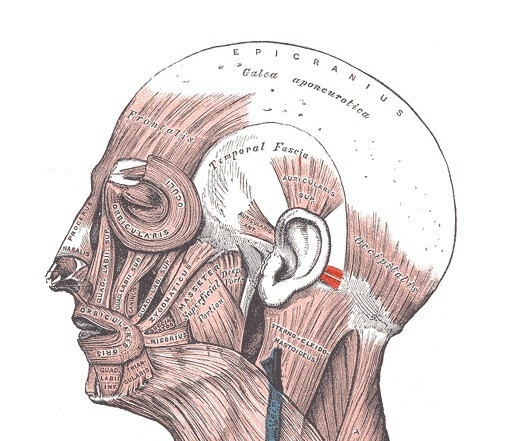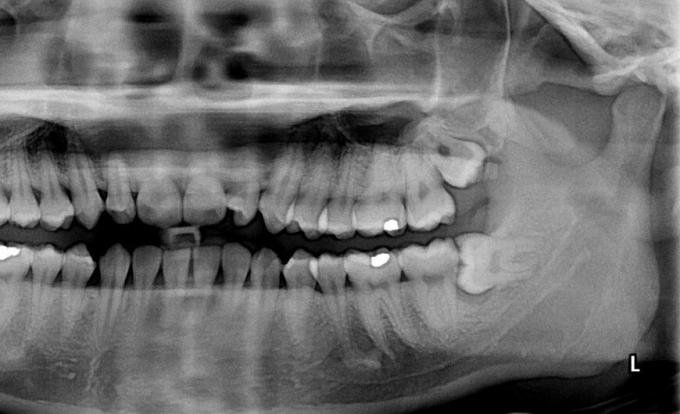Vestigial organs of the human body: what they are, and 10 examples
The human body is not perfect. Although we are highly intelligent and can function quite well in nature, there are many parts of our bodies that do not seem to have a very clear function.
These structures are known as vestigial organs., which, at some point in the history of evolution, should have been useful to us but, currently, their function has disappeared and they have been atrophied.
Next we will delve into the vestigial organs, how the theory of evolution explains their existence and which are the best known of the human body.
- Related article: "The 25 main organs of the human body"
What are vestigial organs?
The vestigial organs are organic structures that do not appear to fulfill any important biological function in the organism that possesses them. These structures are preserved as a legacy of the evolutionary process, since at some point in the history of evolution an ancestor of the The current species had that structure, which was useful and functional, but over the years it must have ceased to be important and would end up atrophying Thus, vestigial organs can be seen as the "leftovers" of evolution.
These types of organs, which can also be bones, structures in the skin or any other part of the organism, no longer offer any significant function for the organism. Besides, They can cause problems and be maladaptive, because they are structures prone to infection, as would be the case with the appendix (appendicitis) or fracturing, as would occur with the vertebrae that form the coccyx. In the human case, we have the vestigial organs that we still have because evolution has not had time to make them disappear.
How does evolution intervene?
Among many other pieces of evidence, the presence of vestigial organs in animals is the most irrefutable proof that evolution exists and that natural selection is the force behind the process, since they are the remains of this. The theory of intelligent design, defended by creationist sectors, does not make sense because, if the human being and The rest of the species have been created in a perfect way. What need is there to preserve organs that are not useful for nothing?
According to the evolutionary theory of Charles Darwin, exposed in his book The origin of species (1859), all the species that exist today on Earth come from the same living being, our common ancestor. This ancestor, which must have been very simple, evolved, giving rise to other more complex species and better adapted to the needs of the environment. As a result of the different adaptations we can see the diversity of species that can be found today.
From this theory it is extracted that if a characteristic is not adaptive in nature, it can either disappear, due to that the individuals that possess it do not get to reproduce because they have a disadvantage, or they are conserved but, progressively it is atrophying. The latter would be due to the fact that, since there is no evolutionary pressure on this character, the organ in question is not used and develops less and less function. This Darwinian idea would be the one that would explain the existence of vestigial organs.
It should be said that Darwin was not the first to observe the presence of vestigial organs in animals.. Thousands of years before, Aristotle would notice in the eyes of animals living underground, such as moles, that he did not make sense. that they had them since they were rarely in contact with sunlight. What is the use of having eyes in a place where you cannot see? see?
But the most notable antecedent to Darwin is Jean-Baptiste Lamarck. This French naturalist considered that evolution was governed by a very basic principle: the frequent and sustain of an organ makes it gradually get stronger, giving it a power proportional to the duration of its use. Thus, the organ that has been used little or is in disuse will end up weakening. For example, according to Lamarck, the eyes of moles would have been losing functionality with the passing of generations because this species does not need them.
Despite the fact that the Lamarckian theses were quite important in his time, today we know that they are not entirely true. It is not the lack of use that promotes the weakening of a structure organic, but how adapted or functional it is to face the demands of the environment. If the individual has a structure that gives it a disadvantage, it will most likely have more trouble reproducing than those who either don't have it or have the right version.
Since all living things come from a single ancestor, it is quite easy to find vestigial structures shared by a huge number of species. The vestigial organs, as we have commented, are nothing more than old organs that were functional but that in the current carrier species are no longer so. This process is called “involution”, and it implies that less biological efforts are used to keep this structure active. Thus it loses its functionality, reduces in size and atrophies.
vestigial organs of the human body
There are many vestigial organs in the human body, so many that the debate about exactly how many there are is still open. It is estimated that there could be 86, but there have also been classifications in which more than 180 vestigial organs have been mentioned..
This is because it is not always possible to be sure that an organ has completely lost its functionality, since reminiscences of its ancestral function may remain. In any case, the scientific community agrees that the 10 structures that we will see below can be considered as vestigial organs.
1. Appendix
The vermiform appendix is the best known vestigial organ.. Its fame is due to the fact that, despite being such a small structure, in case of infection, the appendicitis, a serious disease that if not treated in time by removing the appendix surgically You can die.
The appendix is attached to the large intestine and has an elongated shape, like a kind of finger-shaped bag that projects from the colon to the right side of the abdomen.
The appendix is thought to be what remains of an organ that our herbivorous ancestors used to digest cellulose. This function has been lost in our species because we no longer consume tree leaves, which are one of the richest foods in this substance.
By switching to a diet with more meat, fruits and vegetables, the appendix ended up ceasing to be important for our survival, making that as the generations passed it atrophied more and more as it did not have a fundamental importance for our digestion.
Despite this, there are those who think that it could really have some function. It has been said that it could be involved in the immune response, at least indirectly, and it has also been hypothesized that it could be in charge of maintaining the intestinal flora.

2. coccyx
The coccyx (or coccyx) is the final part of the vertebral column. It is formed by the last four vertebrae that are small in size and lack mobility and, from birth, are fused together.
This structure has no functionality, at least apparently. Instead, the part anterior to the coccyx, which also does not present mobility, does seem to fulfill a certain important role in transmitting movement to the pelvis.
Its evolutionary origins are quite ancient, being found in the most primitive monkeys. It is believed that the coccyx is the result of having progressively lost the tail, a structure that is common in most vertebrates. Thus, our coccyx would be an involution of the tail.
3. paranasal sinuses
paranasal sinuses are hollow cavities found in our skull. They are like air bags in our head and, although there are those who say that they could have the function of a camera of resonance or to release weight from the skull, the truth is that they seem to be vestigial structures that, on top of that, cause problems serious.
The paranasal sinuses can become the home of bacteria or other pathogens that have free access to this structure and remain well isolated. When this happens, the sinuses become infected and sinusitis, a respiratory disease, occurs.
It makes no evolutionary sense to have a structure that, in addition to not having a clear function, is prone to infection. However, yes, they must have been useful for the animals from which we have inherited them, the sauropsids. These large reptiles needed these cavities to shape their skulls.

4. Plica semilunaris
The plica semilunaris is a small fold found in the ocular conjunctiva, that is, the membrane that surrounds the eye. It is located in the inner corner of the eye and it looks like a reddish tissue that protrudes between the eyelids. Although they facilitate eye movement and help maintain eye drainage, they are considered vestigial organs.
Apparently it comes from a structure that fulfilled other functions in our ancestors and that has involuted: the third eyelid or nictitating membrane. This membrane is common in birds and reptiles, consisting of a translucent eyelid that serves to lubricate the eye. and clean it without having to close your eyes and briefly lose vision.
- You may be interested in: "The 11 parts of the eye and their functions"
5. posterior auricular muscle
The posterior auricular muscles, which are located behind the ear, are considered vestigial muscles. Most people cannot move them at will and, if they can, their musculature is still very atrophied.
We have inherited these ear muscles from basal primates, who did need to have a good ability to move their ears at will and thus be able to locate sounds well.
In the human case, this capacity was gradually lost since the auditory pavilion of our species has evolved well enough to detect the origin of sounds without having to move them.

6. Phalanges of the little toe
The phalanges of the little toe are very small bones that lack mobility.. Compared to the phalanges of the other toes, these are highly involuted, which is why they are considered vestigial bones. Its origins lie in our primate ancestors, who did have the ability to move their little toes more freely.
7. Wisdom teeth
The wisdom teeth are teeth that are considered vestigial organs, since they do not fulfill any function important and, furthermore, they run the risk of having cavities very easily and are not well integrated into our physiognomy. It does not make sense that, after puberty, our wisdom teeth grow in, hurting us and, in many cases, making it necessary to remove them. to maintain good oral hygiene.
These molars are a legacy of our primate ancestors, especially those that ate roots (rhizophages). These animals needed much bigger and stronger teeth to be able to chew the hard roots, which were a fundamental food in their diet.
Due to changes in nutrition that occurred at some point in our evolutionary history, the first hominids needed other types of teeth to being able to eat meat, fruits and vegetables, reaching the point that the human jaw evolved to such an extent that it was not adapted to house the teeth of the judgment.

8. male nipple
The nipple is an essential structure for females, since it is used to breastfeed their young and feed them when they are too small to consume solid food. This is the only biological purpose of the nipple, with which, it makes no sense for males to possess them. Thus, the male nipple is a vestigial organ.
9. Body hair
A few million years ago, body hair was essential for keeping hominids living in cold climates warm. With changing temperatures and migration to warmer climates, body hair eventually lost its usefulness, making having a lot or having a little not an important factor in survival.
Although in certain parts such as the arms, legs, back and chest it does not seem to fulfill a significant function, in other parts it is useful. An example of this is the hair on the eyebrows that prevents sweat from entering the eyes, while the Facial hair is considered a secondary sexual character for the reproductive purpose of attracting females. females.
10. erector pili
The erector pili is a muscle group near the hair follicle that is responsible for raising hair in situations of danger or fear, that is, giving us "goosebumps." It is believed that its original function was to make us appear larger in the face of an animal threat, in order to intimidate and scare him. However, when losing hair, this function ceased to make sense, and we have been left as a vestigial mechanism.

Bibliographic references:
- Smith, H.F., Wright, W. (2018) Vestigial organs. Springer Nature Switzerland.
- Muller, G.B. (2002) Vestigial organs and structures. Encyclopedia of Evolution.
- Kabir, A. (2018) Human Vestigial Organs: Hidden Parts in Medical Science. CPQ Medicine
- Audesirk, T., Audesirk, G., & Byers, B. AND. (2003). Biology: Life on Earth. Pearson education.
- Campbell, N. A., & Reece, J. b. (2007). Biology. Pan American Medical Ed.
- Conrad, e. c. (1983). True vestigial structures in whales and dolphins. Creation/Evolution, 10, 9-11.
- dao, a. H., & Netsky, M. g. (1984). Human tails and pseudotails. Human pathology, 15(5), 449-453.
- West-Eberhard, M. J. (2003). Developmental plasticity and evolution. Oxford University Press.

